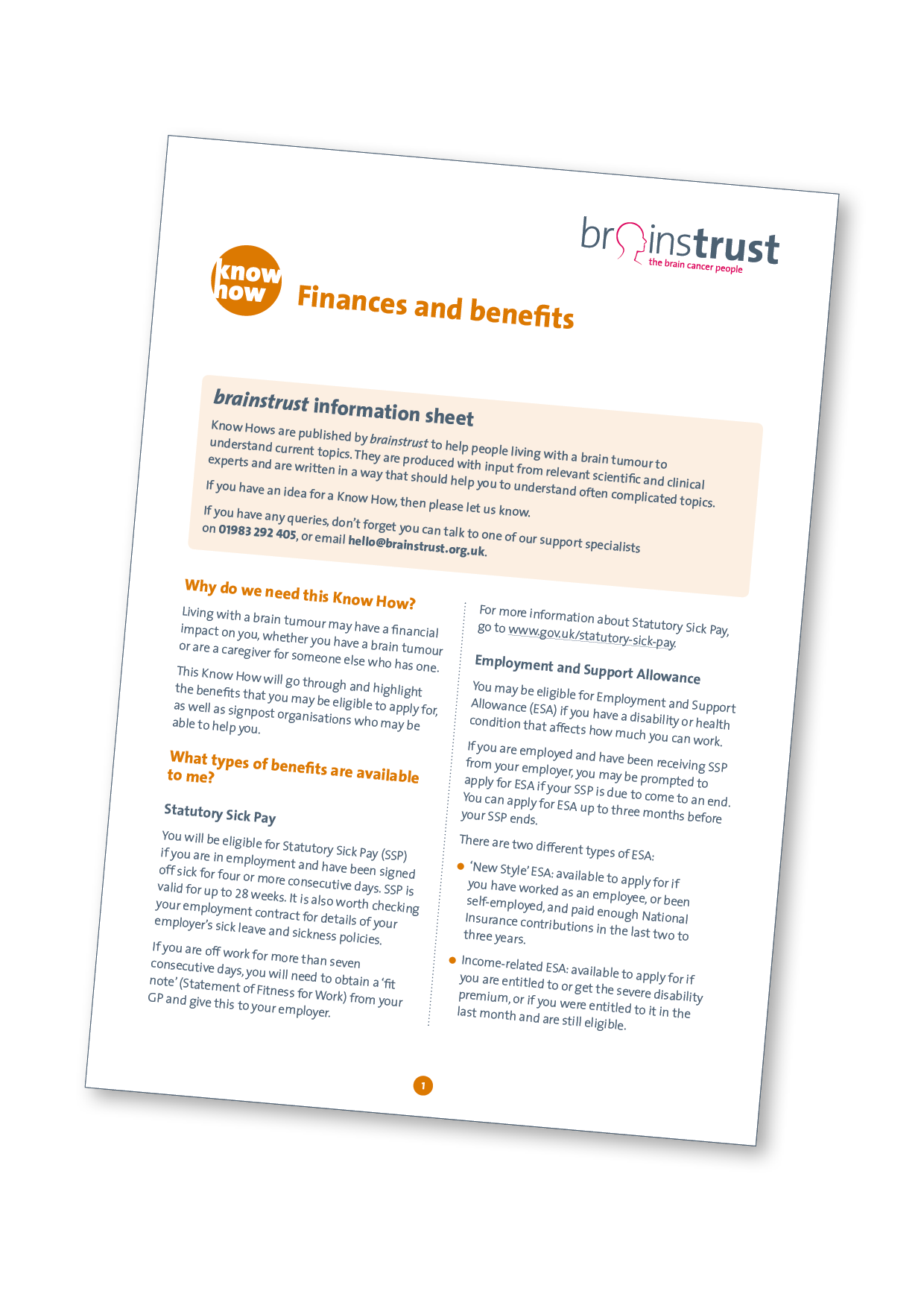Helping you navigate welfare and benefits
 When you or someone close to you is diagnosed with a brain tumour, you may find yourself worrying about finances. You may be worried about reduced pay, running your business or having to make the decision to stop working. Being in this space can be overwhelming, especially when you are already dealing with so much. It is at these times that having the right support in place is transformative.
When you or someone close to you is diagnosed with a brain tumour, you may find yourself worrying about finances. You may be worried about reduced pay, running your business or having to make the decision to stop working. Being in this space can be overwhelming, especially when you are already dealing with so much. It is at these times that having the right support in place is transformative.
Earlier in the year, we welcomed Eric to the brainstrust team as our Volunteer Welfare Benefits Advisor. Eric has vast experience and knowledge of the welfare benefits system and is passionate about giving people the support and guidance they need to navigate this complex and often very stressful process.
“‘Having Eric’s support in completing my PIP application was incredibly helpful and helped to take a bit of the pressure away and make this process feel more manageable. I felt very comfortable speaking to Eric and felt that he really listened to me and it very much felt like a collaborative effort between the two of us.”
How Eric helps:
- Discussing available benefits and financial support and helping to assess your eligibility to apply
- Supporting you through the application process for benefits such as PIP
- Coaching sessions prior to any medical assessments through DWP.
- Supporting you through the mandatory reconsideration and appeals process for PIP.
- Helping you to explore one-off grants for specific purposes such as essential equipment
- Signposting to relevant support services
“Eric has been amazing and so supportive. I wasn’t feeling well when he rang, and he arranged another phone call without any fuss and bother. He listened to everything I said and even filled out the form for me so all I had to do was copy it over. I’m so grateful for his support and help. He is a lovely man. Thank you so much to all of you at brainstrust .”
So far Eric’s specialist support has secured nearly £40,000 a year of welfare benefits payments for people in need.
“The welfare and benefits advice service is brilliant. I really believe I would never have been awarded PIP without all your help and advice. I really hope that other people can get that help too. Thank you so much for everything you’ve done that has helped me to be awarded PIP. “
“He was very positive and encouraging and I felt so much more confident going into the meeting after speaking with him”
If you would like to find out how Eric may be able to support you, get in touch with us by emailing hello@brainstrust.org.uk or give us a call on 01983 292 405.
Information to help you feel more in control and better resourced about finance and benefits
Brain tumour know hows
Finance and benefits
Our finance and benefits Know How contains information about benefits that could support you and your family when one of you has a brain tumour.
Click here to download the Finance and Benefits Know How.
 Money worries
Money worries
This Know How provides you with a framework to help you deal with money worries.
Click here to download the Money Worries Know How.
You can also find more information on our money matters page by clicking here.
By signing up to our mailing list, you will receive all the latest news, events and resources straight to your inbox – helping make sure you are as well resourced and as informed as possible.










